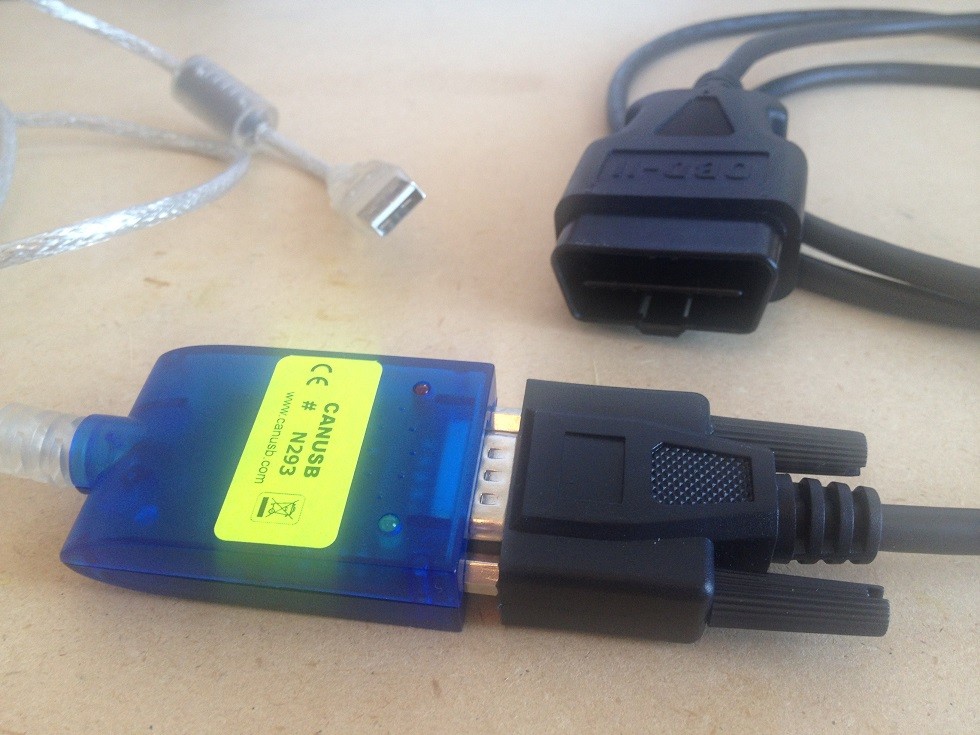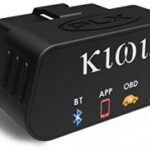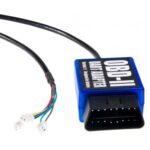For Nissan 350Z enthusiasts seeking a personalized touch, integrating a custom heads-up display (HUD) offers a unique blend of technology and automotive customization. The vision of real-time vehicle data projected directly into your line of sight is compelling. While commercial HUD solutions exist, they often lack the specific features and personalization desired by true car aficionados. This article delves into the exciting prospect of creating your own OBD2-connected HUD for your 350Z, drawing inspiration from DIY projects and readily available resources.
Decoding Your 350Z: OBD2 and CAN Bus Unveiled
Modern vehicles, including the Nissan 350Z, are equipped with an On-Board Diagnostics port, universally known as OBD2. This port, typically located beneath the driver’s side dashboard, serves as a gateway to your car’s internal network. Initially designed for service technicians to diagnose vehicle issues, the OBD2 port provides access to a wealth of data. The standardized OBD2 protocol allows retrieval of various parameters, from engine temperature to vehicle speed. A comprehensive list of standard OBD2 parameters is readily available, offering a starting point for data monitoring.
However, the depth of information goes even further. Newer cars like the 350Z utilize a Controller Area Network (CAN) bus system. This sophisticated network acts as the central nervous system of your car, enabling different control modules to communicate efficiently using just two wires: CAN-H and CAN-L. Intriguingly, this CAN bus network is also accessible through pins 6 and 14 of the standard OBD2 port. By tapping into the CAN bus, you gain access to the raw, unfiltered data that your car’s systems use to operate. This “behind-the-scenes” glimpse offers the potential to display a far richer set of data than standard OBD2 alone. Projects like the open-source “Knio Carhack” demonstrate the feasibility and excitement of CAN bus data exploration for automotive customization.
Building Your 350Z OBD2 HUD: A Practical Approach
Embarking on a DIY OBD2 HUD project for your 350Z involves a combination of hardware and software integration. A crucial component is a CANUSB module, acting as the interface between your car’s CAN bus and a computer. To physically connect to your 350Z’s OBD2 port, an OBD2-to-serial cable is necessary. In some instances, minor cable modifications might be required to ensure correct wiring. A typical modification involves aligning the CAN-L, Ground, and CAN-H wires from the serial cable to the corresponding pins on the OBD2 connector. Keeping the wiring simple by disconnecting unused wires is advisable for initial setup.
On the software side, a custom program is essential to communicate with the CANUSB module and interpret the incoming data stream. A basic logger program can capture raw CAN bus messages. Filtering messages by ID, such as ID 180 as shown in the example, allows focusing on specific data sets. Visualizing this logged data is the next key step.
Initial analysis of a 370Z’s CAN bus reveals a surprisingly concise set of around 30 primary message IDs during normal operation. Despite the limited number of IDs, each message can contain up to 8 bytes of data, encoding a wide array of vehicle parameters. Deciphering these bytes is the challenge, as Nissan service manuals offer limited CAN bus documentation. To overcome this, data visualization tools become invaluable. Software designed to graphically represent logged data from drives aids in identifying patterns and correlations.
Visualizing parameters like vehicle speed, RPM, pedal positions, and brake/clutch status from raw CAN data simplifies the decoding process. By comparing visualized CAN data with known OBD2 standard parameters, a clearer understanding of the 350Z’s data structure emerges. Spreadsheets documenting decoded CAN signals, like the example provided for the 370Z, become crucial resources for the DIY HUD community.
The Road Ahead: From Data to Heads Up Display
The journey to a fully functional 350Z OBD2 heads-up display is iterative. Future steps involve integrating standard OBD2 parameter retrieval alongside the already captured CAN bus data. This combined approach will allow for cross-referencing and validation of decoded CAN signals. Continued data analysis and community collaboration, particularly through shared resources like CAN data spreadsheets, will accelerate the process of unlocking the full potential of the 350Z’s data network. Ultimately, this DIY approach paves the way for a highly customized and informative heads-up display, perfectly tailored to the needs and desires of the discerning 350Z owner.


